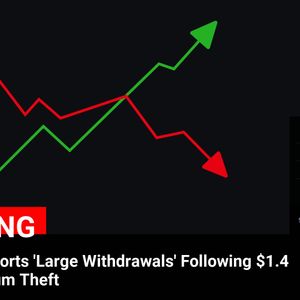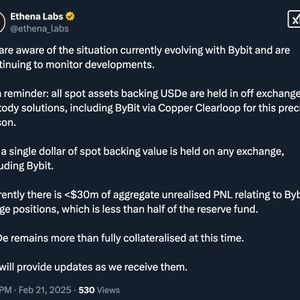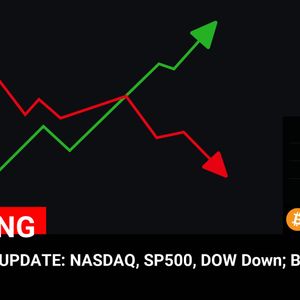In the fast-paced world of cryptocurrency and Forex trading, understanding the strength of the US Dollar is paramount. The US Dollar Index (DXY), a key benchmark for the dollar’s value against a basket of major currencies, is currently at a critical juncture. Despite mounting bearish signals, the index is displaying surprising resilience around the 107.00 level. What does this mean for your trading strategy, and can this resilient hold last? Let’s delve into the latest price forecast and technical analysis to uncover potential trading opportunities. Decoding the Bearish Signals for the US Dollar Index The technical charts paint a picture of increasing bearish bias for the US Dollar Index . Several indicators point towards potential downward pressure: Descending Channel : The DXY is currently trading within a descending channel on the daily chart. This pattern typically suggests a prevailing downtrend, indicating sellers are in control. RSI Below 50 : The 14-day Relative Strength Index (RSI) sits below the critical 50 mark. This is a significant signal, suggesting that bearish momentum is gaining strength and the index is not in overbought territory, leaving room for further declines. Below EMAs : The US Dollar Index is trading below both the 9-day and 14-day Exponential Moving Averages (EMAs). These EMAs are short-term trend indicators, and being below them reinforces the notion of weak short-term price momentum. These technical factors combined suggest that the path of least resistance for the DXY might be downwards. But, the price action around 107.00 tells a different story of resilience. Why is the US Dollar Index Holding Gains Around 107.00? Despite the clear bearish bias , the US Dollar Index is stubbornly holding onto gains around the 107.00 mark. This could be attributed to a few factors: Psychological Support : The 107.00 level may act as a psychological support zone. Traders might see this round number as a significant level, leading to buying interest and preventing further declines, at least temporarily. Short Covering : After consecutive sessions of losses, some traders might be covering their short positions, providing temporary upward pressure to the DXY. Broader Market Sentiment : While technicals suggest bearishness, underlying market sentiment or unforeseen economic data releases could be providing unexpected support to the dollar. Keep an eye on upcoming economic announcements that could shift market dynamics. However, the underlying bearish bias should not be ignored. The tug-of-war between technical indicators and short-term price action makes the current juncture critical for traders. Key Price Levels to Watch in the DXY Price Forecast To navigate this uncertain period, identifying key support and resistance levels is crucial for your US Dollar Index price forecast : Support Levels: Primary Key Support: 106.30 : This level corresponds to the lower boundary of the descending channel. A decisive break below this point could accelerate the bearish momentum. Psychological Support: 106.00 : Further down, 106.00 acts as another layer of psychological support. Three-Month Low: 105.41 : The low from December 6th represents a significant longer-term support level. Breaching 106.00 could open the door to testing this level. Resistance Levels: Immediate Resistance: 107.34 : The 9-day EMA provides the first hurdle for any potential bullish recovery. 14-day EMA: 107.54 : Overhead, the 14-day EMA acts as the next resistance level. Upper Channel Boundary: 109.50 : A significant break above the EMAs could target the upper boundary of the descending channel, a considerable distance away, at 109.50. Five-Week High: 109.80 : The high from February 3rd represents a more ambitious upside target if bullish momentum were to return strongly. Monitoring these levels will be key to understanding the next move in the US Dollar Index . Current US Dollar Strength Across Major Currencies To get a snapshot of the dollar’s current strength, let’s look at today’s performance against major currencies: US Dollar (USD) Performance Today USD EUR GBP JPY CAD AUD NZD CHF USD 0.17% 0.06% 0.35% 0.04% 0.07% 0.48% -0.04% EUR -0.17% -0.11% 0.21% -0.13% -0.11% 0.31% -0.21% GBP -0.06% 0.11% 0.31% -0.02% -0.00% 0.41% -0.11% JPY -0.35% -0.21% -0.31% -0.32% -0.30% 0.10% -0.41% CAD -0.04% 0.13% 0.02% 0.32% 0.02% 0.44% -0.09% AUD -0.07% 0.11% 0.00% 0.30% -0.02% 0.42% -0.14% NZD -0.48% -0.31% -0.41% -0.10% -0.44% -0.42% -0.52% CHF 0.04% 0.21% 0.11% 0.41% 0.09% 0.14% 0.52% As you can see, the US Dollar shows strength against currencies like NZD and JPY, while exhibiting mixed performance against others. This nuanced picture highlights the importance of considering individual currency pairs in your trading decisions. Conclusion: Navigating the US Dollar Index’s Crossroads The US Dollar Index is at an interesting juncture. While technical indicators lean towards a bearish bias , the index’s resilience around 107.00 cannot be ignored. For traders, this means careful monitoring of key support and resistance levels, and staying informed about broader market developments that could influence the dollar’s direction. Will the bearish pressure eventually prevail, pushing the DXY lower, or will the dollar stage a defiant comeback? Keep a close watch on the charts and market news to make informed trading decisions in this dynamic environment. To learn more about the latest Forex market trends, explore our article on key developments shaping US Dollar liquidity.



















